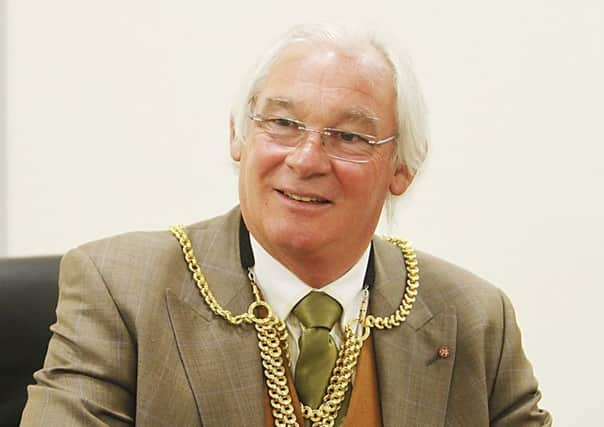Andrew Whitaker: Selection lottery grips Labour MSPs


The ongoing internal battles gripping Jeremy Corbyn’s Labour Party at Westminster have meant that events in the party north of the Border have been put in the shade.
But what is easily the most under-reported episode currently dominating Scottish Labour’s proceedings could by a strange twist turn out to one of the most significant developments in living memory.
Advertisement
Hide AdAdvertisement
Hide AdRight through until early February, Scottish Labour will be gripped by the most hotly contested race it has experienced, under devolution, for places on the party’s regional list in May’s election.
Labour Party members in Scotland are currently being inundated with e-mails and mailshots from sitting MSPs and those hopeful of replacing them, asking for their support in the contest, which is being conducted by an online, one member, one vote ballot.
With polling suggesting the SNP may be on course to take all Labour’s remaining constituency seats at Holyrood on 5 May, it has become a largely accepted fact of political life that the only realistic prospect of election to the parliament for Labourites is via the regional list section of the vote.
The conventional wisdom about the regional list being the only tenable route to Holyrood for Labour politicians meant the selection of candidates for that electoral contest was always going to be a keenly fought battle.
But the move by Scottish Labour leader Kezia Dugdale to scrap protected places on the regional list for sitting MSPs, abolishing at a stroke the notion of what was almost a job for life, means the party is experiencing the biggest, and most open, national selection battle since the start of devolution.
Incumbent MSPs, including those who have been in place since the opening of the Scottish Parliament in 1999, are now in a fight for political survival in a way they probably never saw coming a few years ago.
There are also many more new hopefuls on the block battling for a ranking high enough on Labour’s regional lists that could see them elected as an MSP.
It’s unknown how things might play out, but there are certainly some intriguing contests, most notably in Glasgow, where former Scottish Labour leader Johann Lamont – perhaps fearing her Glasgow Pollok constituency seat is likely to fall to the SNP – is battling for a place on the regional list.
Advertisement
Hide AdAdvertisement
Hide AdThe same goes for Lamont’s former deputy, Anas Sarwar who, having lost his Glasgow Central Westminster seat in the SNP general election rout last May, now hopes to revive his career by making it to Holyrood.
Other interesting names in the frame in Glasgow include former Glasgow Kelvin MSP Pauline McNeill who is seeking a return to Holyrood after a five-year absence, and James Kelly, the Rutherglen constituency MSP, battling for a place on the list.
Sitting members Patricia Ferguson, Hanzala Malik, Paul Martin and Anne McTaggart are also in the tussle for the Glasgow list, as is another former MSP, Bill Butler.
In the Lothians, former minister Sarah Boyack, an ever-present in the parliament since its inception, is in a fight to ensure she gets a high enough place on the list, which Labour took three MSPs on last time, to secure a return ticket to Holyrood.
Former leadership contender Neil Findlay is in the same contest and it’s widely assumed that he and Boyack will be there or thereabouts when the results of the ballot are known, with both politicians astute operators who are running good campaigns.
Labour’s other sitting MSP for the Lothians, Kezia Dugdale, automatically tops the list in the region as leader under Labour Party rules.
In Central Scotland there are 20 candidates on the shortlist and 18 in the West region seeking a good list ranking, while in Mid Scotland and Fife former Dunfermline Athletic manager Jim Leishman is among those hoping to be new arrivals at Holyrood next May.
Advertisement
Hide AdAdvertisement
Hide AdIt’s no exaggeration to say there are Labour MSPs seriously worried about their political future, while at the same time those perhaps currently unknown outside the Holyrood bubble have been handed the best ever chance of becoming MSPs.
Of course, the whole point of what is a sensible exercise is the ending of a system Dugdale’s predecessor Jim Murphy described as a “type of closed shop where sitting MSPs are protected at the top of the list, and where their election doesn’t come on polling day, but on internal selection day”.
Simply keeping faith with the same faces, tainted by past defeats, would do nothing to spark a recovery, which seems as elusive as ever for Scottish Labour with the SNP going from strength to strength in terms of popularity despite a shaky performance in government of late.
It’s understood that Dugdale earlier approached a number of “new faces” outside the normal political bubble as part of an attempt to get some fresh blood to seek selection as Labour candidates.
Very few commentators have had a good word to say about Scottish Labour for what feels like years, but the scale of what Dugdale is attempting in this regard does deserve some credit, even if it does little to hold back the SNP juggernaut on 5 May.
It’s perhaps also worth ending by pointing out that had the challenge mounted to sitting MSPs by making them face what is effectively “mandatory re-selection” been tried by Jeremy Corbyn, there would surely have been howls of protests from self-interested critics of the leadership who would have been quick to accuse him of a purge of so-called moderate MPs.